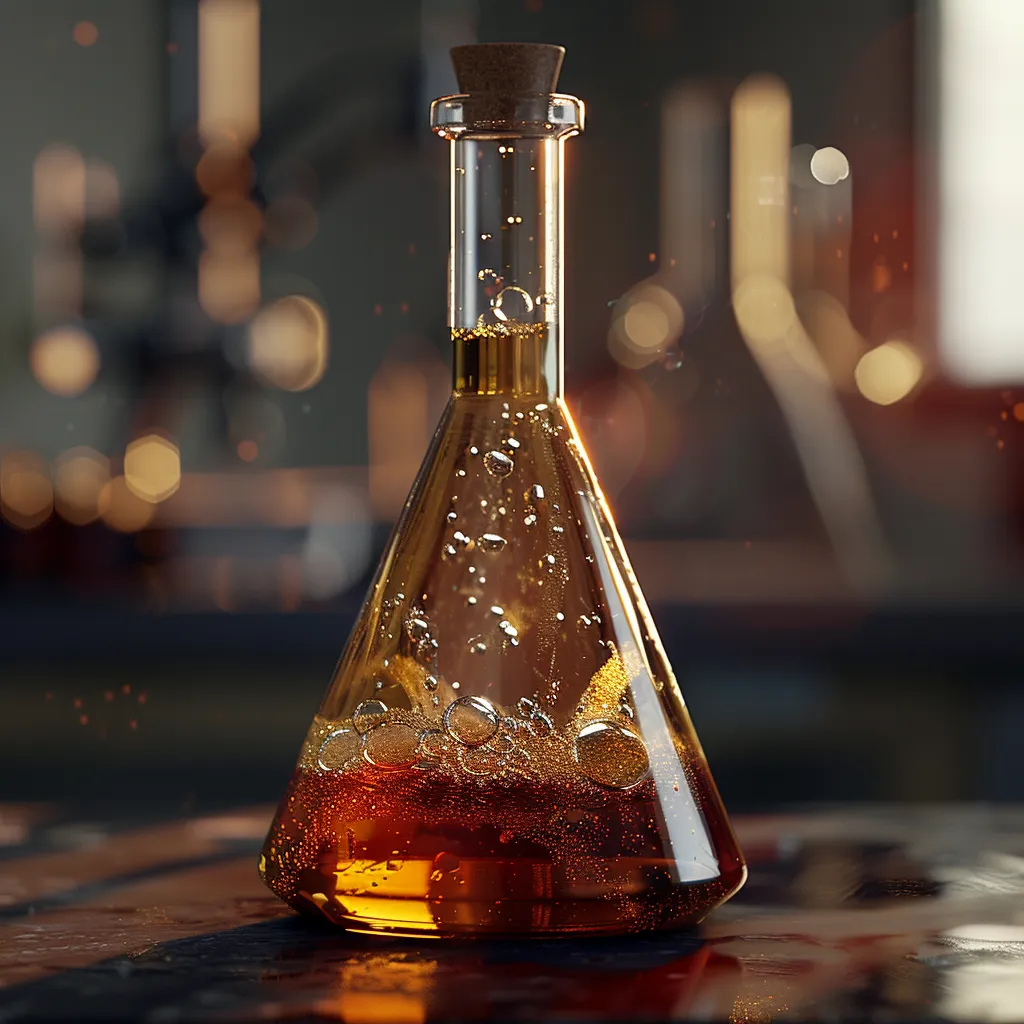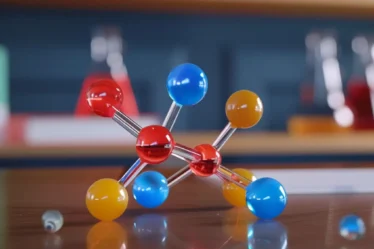
Hydrocarbons are essential organic compounds made up of carbon and hydrogen. These molecules are the foundation for many fuels and industrial materials.
Hydrocarbons can have different bonds between carbon atoms, changing their structure and properties. Some hydrocarbons have only single bonds, while others may have double or triple bonds.
This variety allows them to be classified as alkanes, alkenes, and alkynes. Their chemical structure also influences how they react with other substances, making hydrocarbons incredibly versatile.
Hydrocarbons: Quick Summary
Do you just need the basics? Here’s a simple explanation of hydrocarbons:
🟠 Hydrocarbons are organic compounds of hydrogen and carbon, divided into saturated (alkanes) and unsaturated (alkenes and alkynes).
🟠 Alkanes are saturated hydrocarbons with single bonds, while alkenes and alkynes contain double and triple bonds.
🟠 Aromatic hydrocarbons, like benzene, have a unique ring structure with alternating single and double bonds, giving them special stability.
🟠 Cyclic hydrocarbons form rings, such as cycloalkanes (single bonds) and cycloalkenes (double bonds).
🟠 IUPAC naming rules use prefixes like meth-, eth-, and prop- based on the number of carbons and suffixes like -ane, -ene, and -yne for bond types.
🟠 Some hydrocarbons, like benzene and acetylene, follow naming exceptions and are often referred to by their common names.
If you find aromatic, cyclic, and aliphatic hydrocarbons challenging, don’t worry! Personalized tutoring or interactive chemistry lessons make these concepts more straightforward. Explore more chemistry topics and broaden your knowledge with our free World of Chemistry blogs.
What Are Hydrocarbons?
Hydrocarbons are organic compounds consisting only of carbon and hydrogen atoms. The carbon atoms form chains or rings, and the hydrogen atoms bond. Hydrocarbons are categorized based on the types of bonds between the carbon atoms.
Alkanes are saturated hydrocarbons with only single bonds between carbons, following the general formula $CnH_{2n+2}$. A common example is methane ($CH_4$).
Alkenes and alkynes, known as unsaturated hydrocarbons, contain double ($C=C$) or triple bonds ($C≡C$), respectively. For example, ethene ($C_2H_4$) is an alkene, while ethyne ($C_2H_2$) is an alkyne.
Different types of bonds change the reactivity and properties of each hydrocarbon.
Types of Hydrocarbons: Alkanes, Alkenes, and Alkynes
We can group hydrocarbons into different types based on the bonds between carbon atoms. These bonds determine their structure, chemical formula, and reactivity.
The three main types of hydrocarbons are alkanes, alkenes, and alkynes.
Alkanes: Saturated Hydrocarbons with Single Bonds
Alkanes are saturated hydrocarbons, meaning all the carbon atoms are connected by single bonds. This allows each carbon atom to bond with the maximum number of hydrogen atoms, making them “saturated.”
The general formula for alkanes is:
$CnH_{2n+2}$
n represents the number of carbon atoms.
For instance, methane ($CH_4$) is the simplest alkane, while propane ($C_3H_8$) has three carbon atoms.
Alkanes can have straight-chain or branched-chain structures. Straight-chain alkanes, like butane ($C_4H_{10}$), have carbon atoms connected in a continuous line. Branched alkanes, like isobutane, have carbon atoms branching off from the main chain.
Due to the stability of their single bonds, alkanes are less reactive than other hydrocarbons. They primarily undergo combustion reactions, making them useful as fuels.
For example, octane is a key component of gasoline. Alkanes’ stability also makes them suitable for use in lubricants and solvents.
Alkenes: Unsaturated Hydrocarbons with Double Bonds
Alkenes are unsaturated hydrocarbons that contain at least one double bond ($C=C$) between carbon atoms. This double bond makes them more reactive than alkanes.
The general formula for alkenes is:
$CnH_{2n}$
For example, ethene ($C_2H_4$), also known as ethylene, is a simple alkene commonly used to make plastics like polyethylene.
The presence of the double bond gives alkenes a planar structure around the bond, restricting rotation between the two carbon atoms involved. This structural difference contributes to their higher reactivity.
Alkenes are involved in many reactions, including polymerization and addition reactions. Ethylene, for example, is key in producing polymers and plays a role in fruit ripening.
Alkynes: Hydrocarbons with Triple Bonds
Alkynes are another group of unsaturated hydrocarbons, but they contain at least one triple bond ($C≡C$) between carbon atoms.
The general formula for alkynes is:
$CnH_{2n-2}$
A well-known alkyne is ethyne ($C_2H_2$), commonly known as acetylene, used in welding due to its high combustion temperature.
Alkynes have a linear structure around the triple bond, meaning the atoms connected by the triple bond lie in a straight line. The triple bond makes alkynes more reactive than both alkanes and alkenes.
Alkynes participate in addition reactions and are used to produce many organic chemicals, including pharmaceuticals and synthetic fibers.
Naming Hydrocarbons: IUPAC Rules and Examples
Naming hydrocarbons follows clear IUPAC rules to describe their structure accurately. Each hydrocarbon’s name consists of a prefix and a suffix representing the number of carbon atoms and the types of bonds in the molecule.
Prefixes like meth- (1 carbon), eth- (2 carbons), and prop- (3 carbons) identify the number of carbon atoms in the chain.
For example, methane ($CH_4$) is the simplest hydrocarbon, while ethane ($C_2H_6$) has two carbon atoms.
As the number of carbons increases, the prefixes continue, such as but- (4 carbons) and pent- (5 carbons).
The suffix shows the type of bond:
- -ane for single bonds, as in propane ($C_3H_8$),
- -ene for double bonds, as in butene ($C_4H_8$),
- -yne for triple bonds, as in propyne ($C_3H_4$).
Numbering carbon atoms starts from the end nearest to a branch or double/triple bond. This ensures that substituents or bonds receive the lowest possible number. For instance, in 2-butene, the double bond begins at carbon 2.
For branched hydrocarbons, the main chain is identified first, while branches are named as alkyl groups like methyl or ethyl, with their position specified. For example, 2-methylpropane describes a three-carbon chain with a methyl group on the second carbon.
Cyclic hydrocarbons, like cyclohexane, are named by adding cyclo- to the base name of the compound.
Hydrocarbon Naming Exceptions
Here’s a list of common hydrocarbons that deviate from strict IUPAC naming rules:
- Benzene ($C_6H_6$): Known for its aromatic ring, avoiding the formal name cyclohexatriene.
- Toluene ($C_6H_5CH_3$): Named for its methyl group attached to a benzene ring.
- Acetylene ($C_2H_2$): Commonly called acetylene, though IUPAC prefers ethyne.
- Styrene ($C_6H_5CH=CH_2$): Widely used in commercial and academic settings.
- Ethylene ($C_2H_4$): Still referred to as ethylene rather than the formal ethene.
- Propylene ($C_3H_6$): The common name propylene is more common than propene.
- Acetone ($CH_3COCH_3$): Typically called acetone, though IUPAC names it propan-2-one.
- Formaldehyde ($CH_2O$): Better known as formaldehyde than its IUPAC name, methanal.
- Isoprene ($C_5H_8$): Commonly called isoprene instead of 2-methyl-1,3-butadiene.
Hydrocarbon Nomenclature and Formula: Excercises
🟠 Hydrocarbon Nomenclature Excercise 1
Name the hydrocarbon $CH_3CH_2CH(CH_3)CH_3$ using IUPAC rules.
Solution: The longest chain has four carbon atoms, making the root name butane. A methyl group ($CH_3$) is attached to the third carbon, so the correct IUPAC name is 3-methylbutane.
🟠 Hydrocarbon Nomenclature Excercise 2
Write the molecular formula for 2-butene.
Solution: The root “but-” indicates four carbon atoms, and “-ene” means a double bond between two carbon atoms. The general formula for alkenes is $C_nH_{2n}$, so 2-butene has the molecular formula $C_4H_8$.
Saturated vs. Unsaturated Hydrocarbons
Saturated hydrocarbons contain only single bonds between carbon atoms, making them more stable.
Known as alkanes, they follow the general formula $C_nH_{2n+2}$. Each carbon atom in a saturated hydrocarbon bonds with four other atoms, typically hydrogen or carbon.
For example, ethane ($C_2H_6$) has two carbon atoms connected by a single bond, with each carbon atom bonded to three hydrogen atoms.
Unsaturated hydrocarbons have at least one double or triple bond between carbon atoms. This category includes alkenes (double bonds) and alkynes (triple bonds).
Alkenes follow the formula $C_nH_{2n}$, while alkynes use $C_nH_{2n-2}$. These compounds are more chemically reactive than alkanes due to their multiple bonds.
For instance, ethene (ethylene, $C_2H_4$) has a double bond between its carbon atoms, and ethyne (acetylene, $C_2H_2$) has a triple bond.
Cyclic Hydrocarbons: Structure and Nomenclature
Cyclic hydrocarbons are hydrocarbons where carbon atoms form a ring structure. Two main types are:
🟠 Cycloalkanes (saturated)
🟠 Cycloalkenes (unsaturated)
Cycloalkanes consist only of single bonds between carbon atoms, with the general formula $C_nH_{2n}$. An example is cyclohexane ($C_6H_{12}$), where six carbon atoms create a closed ring, with each carbon bonded to two hydrogen atoms. Smaller cycloalkanes often experience ring strain due to smaller bond angles.
In contrast, cycloalkenes contain at least one carbon-carbon double bond. Their general formula is $C_nH_{2n-2}$. For example, cyclopentene ($C_5H_8$) has five carbon atoms arranged in a ring with one double bond.
In IUPAC nomenclature, you use the prefix “cyclo-” with the base name of the alkane or alkene, depending on the number of carbon atoms. For instance, a six-carbon ring with single bonds is called cyclohexane, while a five-carbon ring with one double bond is named cyclopentene. You number the carbon atoms starting from the double bond in cycloalkenes or from the position of the substituent in substituted rings.
Aromatic Hydrocarbons: Benzene and Its Derivatives
Aromatic hydrocarbons contain at least one benzene ring, a structure of six carbon atoms arranged in a hexagonal shape.
Benzene ($C_6H_6$) is the simplest aromatic hydrocarbon. The ring structure features alternating single and double bonds, but instead of localized bonds, resonance occurs.
In resonance, the electrons are delocalized across the entire ring, which provides stability to the molecule.
Common benzene derivatives include toluene ($C_6H_5CH_3$), where a methyl group replaces one hydrogen atom, and xylene ($C_6H_4(CH_3)_2$), where two methyl groups attach to the ring. These derivatives maintain the benzene ring’s stability but gain unique properties based on the attached groups.
Aromatic hydrocarbons primarily undergo electrophilic substitution reactions, where another atom or group replaces a hydrogen atom in the benzene ring. Examples of these reactions include nitration, where a nitro group ($NO_2$) substitutes a hydrogen, or halogenation, where a halogen atom replaces a hydrogen atom.
Because of their stability, aromatic hydrocarbons are less reactive than alkenes or alkynes, but they still play a key role in the chemical industry.
They are commonly used in producing plastics, dyes, and pharmaceuticals. The combination of resonance and a stable ring structure distinguishes aromatic hydrocarbons from other types.
Advance Your Knowledge in Alkanes, Alkenes, and Alkynes
Are hydrocarbons tricky for you? A qualified chemistry instructor can explain complex topics in a way that makes sense to you, making organic and inorganic chemistry understandable and enjoyable.
Search for a tutor using phrases like “organic chemistry tutor Liverpool” or “inorganic chemistry teacher Edinburgh” on platforms like meet’n’learn. You’ll find someone who can tailor lessons to your needs.
If you prefer learning in a group, search for “chemistry classes Leeds” or “chemistry lessons London” online. The search will lead you to chemistry tutoring nearby.
Hydrocarbons: Frequently Asked Questions
1. What are hydrocarbons made of?
Hydrocarbons consist entirely of hydrogen and carbon atoms bonded together in various structures.
2. What is the general formula for alkanes?
Alkanes follow the general formula $CnH_{2n+2}$, where “n” represents the number of carbon atoms in the chain.
3. What is the difference between saturated and unsaturated hydrocarbons?
Saturated hydrocarbons (alkanes) have single bonds between carbon atoms, while unsaturated hydrocarbons (alkenes and alkynes) contain double or triple bonds.
4. How are hydrocarbons named using IUPAC rules?
Hydrocarbons are named based on the number of carbon atoms and bond types, using prefixes like “meth-” for one carbon and suffixes like “-ane” for single bonds.
5. What are cyclic hydrocarbons?
Cyclic hydrocarbons are hydrocarbons where carbon atoms form a closed ring, such as in cycloalkanes and cycloalkenes.
6. What is an aromatic hydrocarbon?
Aromatic hydrocarbons, like benzene, have a ring structure with delocalized electrons, providing stability and unique reactivity.
7. What is the common name for ethene?
Ethene is commonly known as ethylene, a name widely used in industrial applications.
8. Why is benzene an exception to IUPAC naming rules?
Benzene retains its common name due to its historical and extensive use, even though it doesn’t follow standard IUPAC naming conventions.
References:
1. ThoughtCo
2. Britannica
3. Wikipedia



